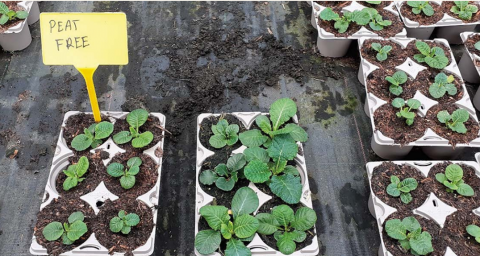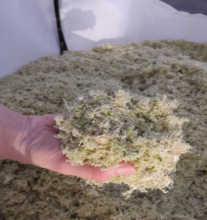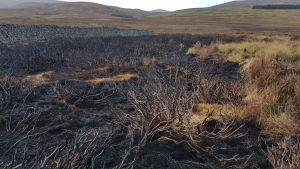After over three decades of calls for an end to the use of peat in horticulture, Defra is consulting on proposals for a ban on the retail sale of peat in England and Wales by 2024.
Discussions are also taking place across the four devolved administrations to consider UK-wide action. Northern Ireland is looking at peat and horticulture as part of its Peatland Strategy for Northern Ireland and the Scottish Government is taking forward an SNP manifesto commitment to ban the sale of peat related gardening products. The Internal Markets Act 2020 will have to be used as a framework with coordinated effort to avoid problems of a ban on sales only being applicable to peat extracted within each administrative area.
 Responding to the Government proposals, environmental bodies have welcomed the proposed ban but point out the urgency of the issue and argue that a delay until 2024 is unnecessary and damaging. At The United Nations Framework Convention on Climate Change (UNFCCC) 26th Conference of the Parties (COP26) in Glasgow the National Trust represented partner bodies across 19 countries to call for an urgent ban on the use of peat in composts and presented a 'Principles of NbS: Demonstrating Success for Peatlands' session with the IUCN UK Peatland Programme (IUCN UK PP) as part of the Peatland Pavilion, which highlighted the progress made in eliminating the use of peat in gardening. COP26 also saw the launch of the IUCN UK PP's latest Demonstrating Success report on Peat-free Horticulture. The report showcases successes in peat-free horticulture and highlights the end of peat use as an opportunity not only to help the environment but also to enable a lasting and sustainable horticulture industry.
Responding to the Government proposals, environmental bodies have welcomed the proposed ban but point out the urgency of the issue and argue that a delay until 2024 is unnecessary and damaging. At The United Nations Framework Convention on Climate Change (UNFCCC) 26th Conference of the Parties (COP26) in Glasgow the National Trust represented partner bodies across 19 countries to call for an urgent ban on the use of peat in composts and presented a 'Principles of NbS: Demonstrating Success for Peatlands' session with the IUCN UK Peatland Programme (IUCN UK PP) as part of the Peatland Pavilion, which highlighted the progress made in eliminating the use of peat in gardening. COP26 also saw the launch of the IUCN UK PP's latest Demonstrating Success report on Peat-free Horticulture. The report showcases successes in peat-free horticulture and highlights the end of peat use as an opportunity not only to help the environment but also to enable a lasting and sustainable horticulture industry.
It is time to move on from the polarised debates between defenders of peat use and those against. There are common goals across the horticulture industry and environmental bodies. Society demands urgent action by all sectors on the intimately linked crises of climate change and biodiversity. All businesses must to respond to the global commitments to demonstrate sustainable practices and to deliver net zero emissions.
Delivering peat-free horticulture is an opportunity for the UK, who for so long has been reliant on imports of peat, to become a leader in manufacturing peat-free products. Ireland was initially the major source of peat for the UK but the largest producer, Bord na Mona, ceased peat extraction for horticulture use in 2019. Imports have also come from the Baltic States, but environmental protection is now limiting these supplies and we risk having to look across the Atlantic to Canada for supplies. The huge carbon footprint of transporting peat such long distances exacerbate the wider carbon impact of the industry. Official figures suggest UK extraction is responsible for around 660,000 tonnes CO2e per annum, but this only relates to the carbon in the extracted and bagged peat. The actual amount could be double if account is taken of the emissions arising from the peat extraction sites in the UK and the lost opportunity for sequestration form healthy peatland.

© Farplants photo of Primula in peat free and reduced peat
There have been attempts by some in the horticulture industry to justify continued peat use on the basis that the industry as a whole is broadly sustainable since it supports the growing of plants and trees which benefit climate change and biodiversity. However, such shallow approaches to sustainability planning do not meet industry standards. Every business must demonstrate that it has avoided unsustainable practices across its whole manufacturing and supply chain. The fact that trees and plants can be grown in nurseries without peat exposes the weakness of peat-based sustainability claims. Another is of the old arguments that unfortunately reappear claiming that the proportion of peat extracted is small by comparison to the area of peatland, which is a little like suggesting that defacing the Mona Lisa is small in relation to all the artwork in the world. One of the striking diagrams in the IUCN UK PP Peat-free horticulture report is the map of lowland raised bogs in the UK. The main source for horticulture peat are these remnant lowland raised bogs, which are so small it is hard to see them on a UK map. They are one of Europe’s rarest and most threatened habitats and the priority must be to repair and rewet them immediately to prevent further loss of their key species, especially in the face of a changing climate.

Figure 1: Extent of peatland in Britain in Ireland and existing lowland raised bog habitats in Great Britain.
Major players in the horticulture industry, as well as new innovative businesses, have risen to the challenge of producing sustainable peat-free products, many of these using materials that would otherwise go to waste. There is also a role for the gardening public to change behaviour and utilise materials arising in their own back yard rather than consuming more plastic wrapped bags of organic matter. The advancement of peat-free products has led to development of materials for use across the entire range of amateur gardening and professional horticulture uses. Gardening experts and horticultural institutions have all recognised the technical viability of peat-free products. The main issue raised by the industry however is one of supply of suitable raw materials. Competition with other industries for bark and wood fibre needs to be addressed by policy makers as part of a comprehensive plan to support the development of a UK peat-free horticulture industry. Having a clear and urgent deadline for the sale of peat is one of the means of focussing the industry and encouraging greater investment in peat-free products.

© Beadamoss photo of raw material
One of the exciting opportunities for peat-free products is the growing and harvesting of Sphagnum on old worked out peat sites. A much-prized material in the horticultural world, there are real win wins for biodiversity and business. We are not alone in this venture and countries like Germany are also proposing peat bans and are investing in Sphagnum production.
We have reached a key moment for bringing about a transition in the way we garden and supply materials for our gardens. A clear endpoint for peat use will set us on our new course, but we also need to start working on a shared approach between government, business, environmental and gardening bodies to get the full rewards that sustainable peat-free horticulture can bring.
Read the Peat-free Horticulture: Demonstrating Success report
Watch the COP26 Principles of NbS: Demonstrating Success for Peatlands session










